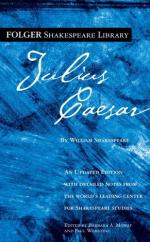|
This section contains 317 words (approx. 2 pages at 300 words per page) |
World of Mathematics on Richard Lawrence Taylor
Richard Taylor is a number theorist who is perhaps best known for his collaboration with Princeton mathematician Andrew Wiles in constructing a proof of Fermat's last theorem.
This famous theorem, written by lawyer and amateur mathematician Pierre de Fermat in the 17th century, states that for the equation xn + yn = zn, if n is > 2, there are no non-zero integer solutions for x, y, and z. Although Fermat stated in his writings he had a proof for the theorem, none was ever discovered in Fermat's written works. Mathematicians had puzzled over a possible proof to the the theorem for centuries, and in that time, proofs of certain cases of the theorem had been presented, However, it was not until Andrew Wiles presented his proof of Fermat's Last Theorem in June of 1993 that the first feasible solution appeared. When Wiles discovered a flaw in his original work several months later, he called on his former student Richard Taylor to repair the gap. Together, Taylor and Wiles synthesized a new approach to the problem area of the proof and published the results in a short paper entitled "Ring-theoretic properties of certain Hecke algebras," published in the Annals of Mathematics in 1995. Since that time, the proof has been widely reviewed and accepted by the mathematical community.
Taylor earned his undergraduate degree at Cambridge University in Cambridge, England and his PhD at Princeton. After a one-year post-doctoral fellowship in Paris, Taylor returned to Princeton for nine months to collaborate with Wiles on the proof for Fermat's Last Theorem. In 1995, Taylor was appointed to the Savilian Chair of Geometry at the University of Oxford, and in 1996 he moved to the U.S. to join the faculty of the department of mathematics at Harvard University. Recently, Taylor has continued his work with modular forms, collaborating with other mathematicians in 1999 to construct proofs for both the Taniyama-Shimura conjecture and the Local Langlands conjecture.
|
This section contains 317 words (approx. 2 pages at 300 words per page) |


